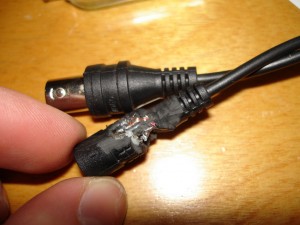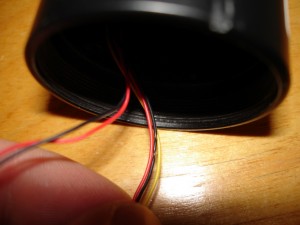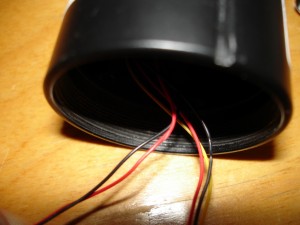After seeing Pumping Station One’s implementation of a space utilization monitor and the cheap listing on Woot.com, we decided to invest in a 16 channel DVR camera system. The system is advertised as having a Linux based OS with a whole host of features including a pile of alarms, interfaces, support for up to 2 TB of storage, etc. Surprisingly, they delivered above and beyond on features! The system has a surprising array of functionality and relatively few spelling errors/outright bugs – that is once you get past IE only (after disabling ActiveX signing verification) or installing a scary DMG for Safari.
Of course, you’re wondering at this point wth this is Sector67 blog worthy, as we avoid posting crap on our blog! Out of the box, there were a couple of bad cameras. One was repaired by reseating the connectors, but another was truly DOA. The good news about these cameras, is they have M12 x 0.5mm standard lens, so you can easily jump on eBay and purchase replacements for the narrow 6mm provided lens, we ended up with the 3.6mm lens for wider field of view. The IR illumination really does go about 20ft, it’s pretty narrow but works well, and the overall image is acceptable for the cost.
Onwards to helping others out there. If you also have a defective camera (and you don’t want to wait a month for an RMA), you should:
- Start by plugging in the camera to different cables (preferably a known working cable) and see if it starts working, if so you may have a bad cable or jack on the DVR/power supply
- Assuming that didn’t fix things, put your finger over the photocell on the front, it’s the striped sensor in the ring of LEDs. With your finger firmly planted on top of the sensor, the ring of LEDs should light up. If they are then you’re getting power to the camera and your cables (external and internal to the IR illuminator) are working.
- If you don’t have power, then you probably have a bad jack. The issue is they have a chrome plated terminal they’re attempting to solder to, which is then injection molded as a strain relief. The problem is that chrome doesn’t wick solder, but is very good at resisting rust and oxidation when it’s sitting in a Chinese factory waiting to be built into a product. . .
- You can check for a bad connection by pressing hard at the backside of the female DC plug, if things suddenly turn on you’re in good shape for this repair:
 You can see in the center of the jack, the red wire has a giant blob of gray solder that’s broken away from the terminal at the center. At top leftish you can see a few loops of copper I caught with the razor blade on the ground connection. In this case, I resoldered the center terminal and used hot glue (or epoxy) to repair the torn up plastic.
You can see in the center of the jack, the red wire has a giant blob of gray solder that’s broken away from the terminal at the center. At top leftish you can see a few loops of copper I caught with the razor blade on the ground connection. In this case, I resoldered the center terminal and used hot glue (or epoxy) to repair the torn up plastic. The red cable at the left runs to the IR illumination, the set of three at right powers the camera and returns video (yellow). I ended up having to cut off the wires at the left and solder them onto the camera main board.
The red cable at the left runs to the IR illumination, the set of three at right powers the camera and returns video (yellow). I ended up having to cut off the wires at the left and solder them onto the camera main board.
